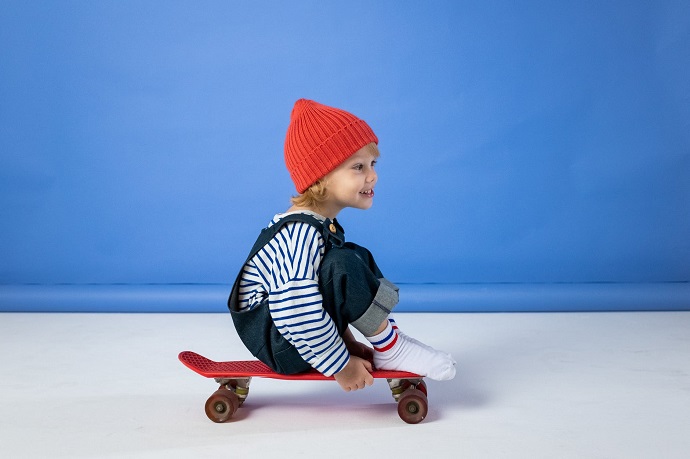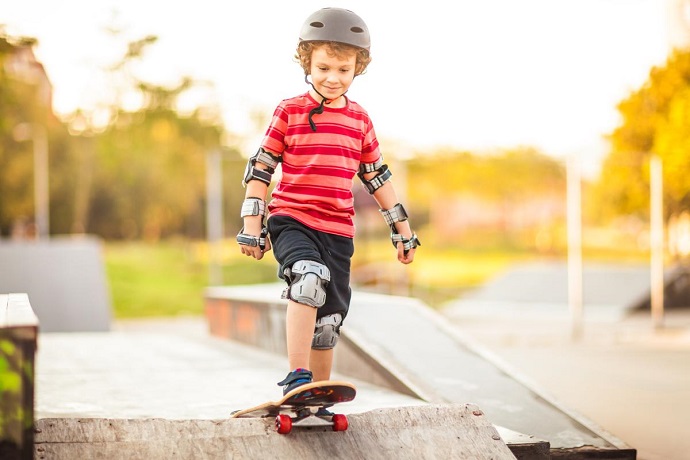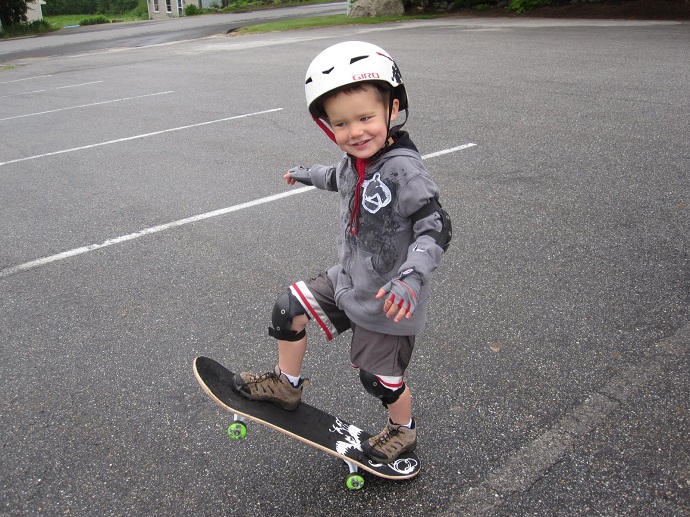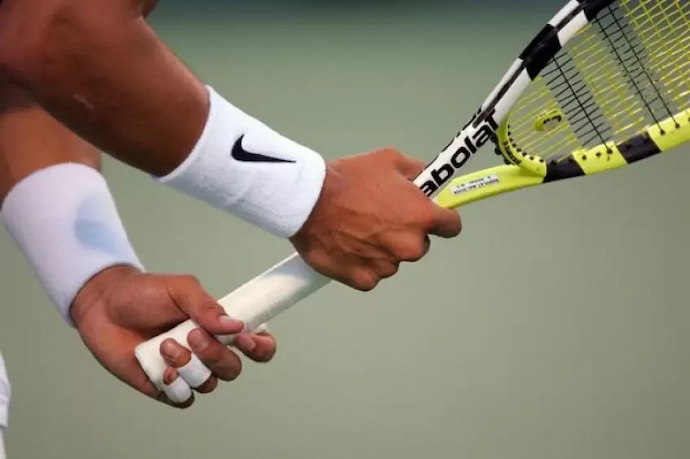Whether you like it or not, here will come a time when your kids will grow up and they’ll find playing with toys boring. Instead, they’ll start showing interest in some more advanced activities and sports like skateboarding.
Skateboarding is a fun activity that will make your child spend more time outdoors instead in front of screens. By engaging in skateboarding, your child will be able to build core strength and improve their balance. Now, while all of this sounds fun and amazing, staying safe and stocking on the right equipment is essential.
Getting a Skateboard

Before buying the first skateboard you see for your kid, you should know that there are different types of skateboards available on the market. Penny boards, longboards, classic boards, carve boards, double kicks and popsicles are some of the many types you can find here. When it comes to choosing the right skateboard for your child, you should take into account his/her age and size.
For instance, for toddlers and younger children, it would be better if you choose a mini-board because they are smaller in size and ideal for those tiny feet of your child. Another thing to have in mind is that skateboards differ in board size as well. So, in order to find the right one, you need to do some more research. One thing is certain, the chosen skateboard should come from a trusted and reputable supplier, so you could have peace of mind that your child will be safe and sound.
Kids Skate Protection
Wrist Guards, Elbow and Knee Pads

Although fun and exciting, the truth is that skateboarding can lead to injuries, just like any other sport. Some of the most common skateboarding injuries are wrist, ankle and face and they usually happen when kids lose their balance. While some children might be lucky and end up with a bruise or two, others can experience sprains, strains, fractures and dislocations.
The easiest way to prevent any kind of injury while skateboarding is by wearing the proper kids skate protection. Some of the most common skateboarding protective gear are wrist guards, elbow and knee pads. Wrist guards are designed to support the wrist and reduce the chances of breaking a bone in case of a fall. Elbow and knee pads, on the other hand, are designed to reduce the severity of scrapes, cuts and prevent gravel burns.
When in the search for the right kids skate protective gear for your kids, make sure to look for products that have a contoured form-fitting design and high impact foam. That way, your child will be able to move with freedom while still being protected from injuries in case of an accident.
Just like choosing the right skateboard, when in the search for the right protective gear, go for the one that comes from a reliable and trusted brand. This is the only way to be sure that you are investing in quality gear that will last a long period of time while offering the needed protection.
Helmets

The most commonly used types of helmets for skateboarding for both kids and adults are the open face helmets. The open face helmets can protect the head from both the sides and back which is essential. Although some parents use bike helmets for both purposes, the truth is that these helmets offer better protection. The most important thing you need to know when choosing a helmet for your little one is to choose the right fit. The easiest way to see if the helmet fits right on your child’s face is to see if it rests along the brow line. The helmet should be levelled and sit on top of the head without moving forward, backward or side to side.
Since all helmets have straps, make sure to teach your kid that the straps should always be buckled in order to give greater protection. The straps should form a ‘V’ under your child’s ears when buckled. Keep in mind that the straps should be snug but comfortable. Once you try the helmet on your child’s head, make sure that your kid can see the bottom rim of the helmet when looking up.
The last thing you can do to make sure if the helmet fits properly on your child’s head is to do the mouth check. In other words, when opening the mouth as wide as possible, your child should feel the as the helmet is hugging his/her head. If not, you should tighten the straps a little more and try again. Keep in mind that the buckle should sit flat against the skin.
When it comes to choosing the right helmet for your child, make sure the chosen model complies with the Australian AS/NZS & U.S. CPSC Safety Standard for Bicycle Helmets for persons age 5 and older. It should also comply with the AS/NZS 2063 bicycle helmets.



